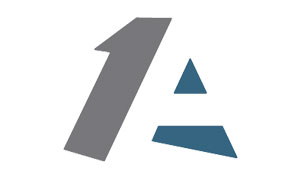St. Landry leader in regional planning efforts

11 Jul 2018
“Acadiana has never done this kind of planning before,” Rodier said. “It’s a big step forward.”
Roads and rivers do not stop at parish lines but planning for them quite often has. As a result, projects in one place have sometimes created unintended bottlenecks of water or traffic in St. Landry and neighboring parishes, and usually meant that taxpayers are not seeing the best use of infrastructure dollars.
That’s why St. Landry government and economic development leaders are enthusiastic about regional efforts that are gaining momentum to coordinate and promote areawide drainage and traffic projects.
Parish President Bill Fontenot, who is a licensed civil engineer, has helped lead the effort to prioritize 20 projects that could help solve drainage and flood problems for the Acadiana Planning Commission, which has $25 million in federal funds to spend.
At the same time, Bill Rodier, St. Landry’s economic development director, is helping a regional transportation steering committee set priorities on road work throughout the area. The drainage effort began when parish presidents from Lafayette, Vermilion, St. Martin, Iberia and St. Landry, agreed to coordinate funding and planning after hundreds of homes flooded in August 2016.
Fontenot said the planning heavily involves the Bayou Teche and Vermilion drainage districts that largely control watershed issues in St. Landry and parishes to the south.
Fontenot pointed out that St. Landry is important in the plan, because it contains several large waterways, including bayous Teche and Courtableau, that flow to the south. “Look at all the levees that have been built in this parish after the floods of 1927 and 1953 and you get an idea of how water affects our area,” he said.
The Acadiana Regional Transportation Steering Committee, also made up of leaders from throughout the area, is working the make sure that the limited road money now available in Louisiana is wisely spent, to identify possible new avenues of funding, and to set priorities on road work on a regional basis, Rodier said.
In St. Landry, “our transportation system, in particular the I-49 and U.S. 190 corridors, put us in a very competitive position,” he notes. “But they must be properly maintained, and they must be effective connectors to a well-designed, well-maintained regional network that ensures accessibility to all of Acadiana for the growing number of new residents who are coming to St. Landry, for the thousands of visitors who come here each year to experience the south Louisiana culture, and for businesses who are discovering new opportunities in a growing region.”
St. Landry has recently invested substantially in a Smooth Ride Home program to repair and rebuild the parish roads that lead to these important highways. That has made the parish more attractive to commercial and business interests recognizing “not only the transportation benefits of good roads, but also the benefit of being able to bring in a workforce from a large area,” he said.
Planning and prioritizing work on the road network connecting all of Acadiana can only help St. Landry, in Rodier’s view.
“For many years, planners and those who fund our roads have taken a very limited view, with parishes often fighting one another to the detriment of everybody. Everyone benefits when we take a larger view and work cooperatively, both in planning what needs to be done and in providing a unified, and stronger, voice when government leaders make decisions on where money will be spent.”
“Acadiana has never done this kind of planning before,” Rodier said. “It’s a big step forward.”
Three things to know about this story:
- St. Landry government and economic development leaders are enthusiastic about regional efforts that are gaining momentum to coordinate and promote drainage and traffic projects.
- Parish President Bill Fontenot, who is a licensed civil engineer, has helped lead the effort to prioritize 20 projects that could help solve drainage and flood problems.
- The Acadiana Regional Transportation Steering Committee is working the make sure that the road money now available in Louisiana is wisely spent.
More Topics

Church groundbreaking opens St. Landry ‘Gateway’
Jun 28 2018
Study beginning of St. Landry public school plan
May 15 2018

